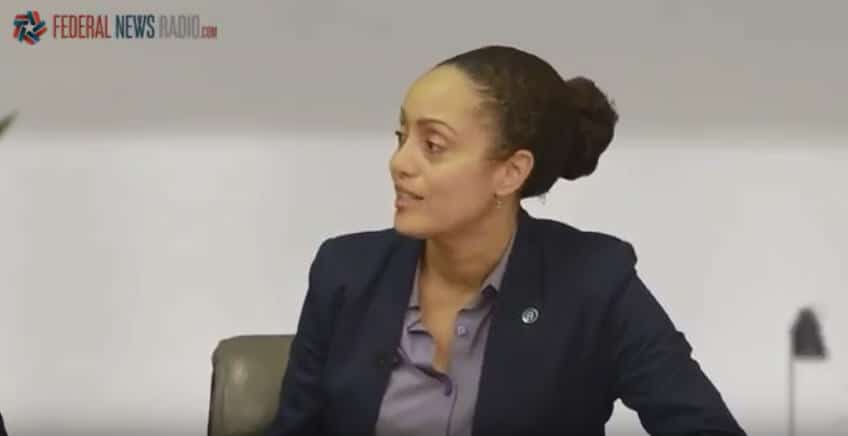Spy agencies look to standardize use of open source intelligence
Spy agencies are starting to organize around a set of common standards and data for using open source intelligence, but challenges remain.
Intelligence agencies are starting to coalesce around a set of common standards and data for using open source intelligence, but challenges remain in boosting the use of OSINT throughout the intelligence community.
Patrice Tibbs, chief of community open source at the CIA, said open source has “proven itself over and over,” especially given current events like Russia’s invasion of Ukraine. OSINT is generally defined as unclassified information, often publicly available, like data gleaned from social media feeds.
“My five-year-old grandson understands the value of the iPhone and in communicating,” Tibbs said during a May 2 event hosted by the Intelligence and National Security Alliance. “If we can’t get on board and figure that kind of thing out now, and understand how that can be leveraged to make sure that we are clear in every country, every city, every home, in some cases, we will lose the lion’s share of any benefit we have in open source.”
Spy agencies have traditionally been organized around other forms of intelligence, like geospatial intelligence or signals intelligence. Agencies have struggled to define how OSINT fits into its broader tradecraft, but the array of public information about the Ukraine conflict has started to shift the conversation about OSINT intelligence circles.
The 2022 Intelligence Authorization Act is also pushing agencies to build more OSINT capabilities within the context of competition with China.
“The Intelligence Community must reorient to engage in a strategic competition with the PRC while countering China’s malign activities globally,” the Senate’s report on the Intelligence Authorization Act states. “To do so, it must continue to build open source intelligence capabilities and augment capacity; enhance sharing of intelligence capabilities; and strengthen the analytical and collection capabilities relating to non- military threats including technology competition.”
As head of the CIA, Director Bill Burns is considered the “community functional manager for open source,” meaning he reports to Director of National Intelligence Avril Haines on OSINT policy, requirements and funding, according to Tibbs.
The intelligence community also has a “National Open Source Committee,” which includes senior leaders from each of the 18 intelligence agencies. Within the committee, there are subcommittees specifically focused on issues like OSINT data, collection management, training and tradecraft, according Tibbs.
She said senior leaders are starting to take OSINT more seriously, providing a chance to set common standards around open source training and tradecraft
“The key for me is just understanding how we modify and change and adapt to the amount of data that’s available,” Tibbs said. “And because there’s not a consistency of how all of the different 18 organizations are utilizing, are capturing or are integrating open source into their workflows, there is inconsistency sometimes in how that is translated and shared and a variety of other things.”
Tibbs said the most difficult challenge for OSINT is “getting everybody to agree on the direction.” She also said ensuring the intelligence community has the technology infrastructure to support OSINT is important.
“Also, it’s just having the individuals with the right skill set and the motivation to come in and really take on these challenging roles, especially in the federal government realm,” Tibbs added. “This is this is not always the easiest place to work. It is not always the highest paid place to work.”
DIA open source center
The Defense Intelligence Agency is also looking to elevate OSINT through its Open Source Intelligence Integration Center. It was established in late 2019, and governs the military’s use of OSINT by leaning on standards, processes and tradecraft, according to Brad Ahlskog, chief of the center.
Compared to traditional forms of intelligence, Ahklskog said OSINT is now playing an “outsized role” in scenarios like exposing Russia’s build-up of military forces and subsequent invasion of Ukraine.
“I would argue that along with the amplified information warfare aspect of hybrid warfare, there’s a vital need for what I’ll call ‘hybrid intelligence,’” Ahlskog said during an April 26 presentation at the GEOINT conference in Denver. “It features a larger reliance on OSINT to both identify the threats, support deterrence operations, and provide the ground truth of the battlefield situation during the conflict.”
But he said the Defense Department will rely on contractors to help with a “data-centric approach” to OSINT. The approach will rely on artificial intelligence and automation to speed up the exploitation of such data, but it doesn’t come without some caveats.
“This translates to a need for datasets that are cataloged discoverable, or resident in government or commercial applications that are readily machine ingestible through application interfaces for transfer into other applications in formats that are not proprietary,” Ahlskog said. “Too often in the past, some open tools or applications were created with self contained datasets that were not easily blended with other data, or datasets from other sources that cannot be easily moved into a proprietary application.”
Furthermore, he said it will be crucial for analysts to understand how algorithms are analyzing the data and reaching specific conclusions.
“We want to produce actionable intelligence from them, and we must be able to easily understand and clearly explain how application ‘X’ produced information ‘Y’ that was used to inform decisions ‘Z,’” he said. “Without transparency into how OSINT data is obtained and processed, the intelligence community personnel will be very reluctant to rely on that PAI for intelligence purposes. Verification, validation and sourcing play integral roles for data in these cases.”
Beyond technology, Ahlskog said he thinks the culture around relying on OSINT is starting to change.
“I think more and more of our customers and personnel realize the value of open source,” he said. “They also get it first, frankly, in many cases. It’s very immediate. . . . It wasn’t possible 10 years ago, or 15 years ago, for information to be that widespread, immediately available to anyone who has a mobile device, or computer at their desk. So I think a lot of our customers, and our all source analysts and other collectors are getting much more comfortable with relying on open source early and often.”
Copyright © 2025 Federal News Network. All rights reserved. This website is not intended for users located within the European Economic Area.
Follow @jdoubledayWFED






